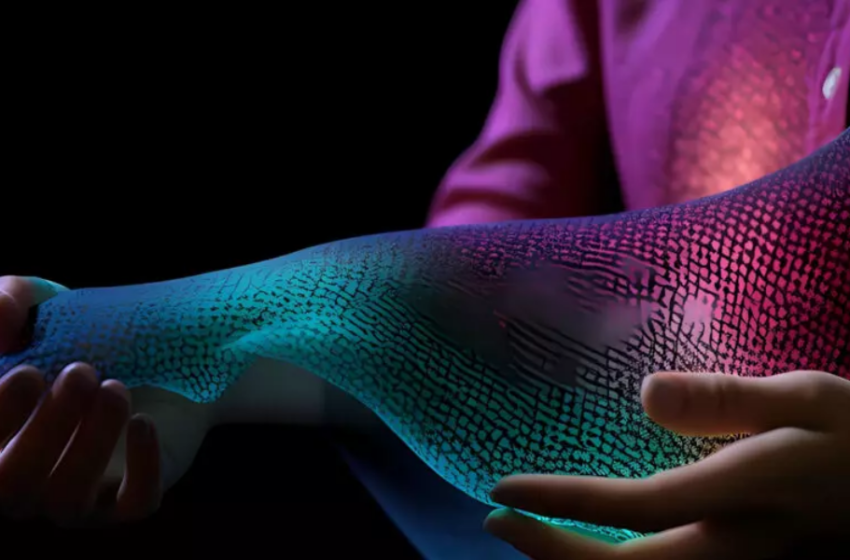
Smart Fabrics Revolution: Unraveling the Future of Fashion
Smart fabrics, a fusion of technology and textiles, are reshaping the landscape of fashion and functionality. In this in-depth exploration, we delve into the world of these cutting-edge materials, uncovering the trends, technologies, and transformative applications that make smart fabrics a beacon of innovation in the textile industry.
The Evolution of Fabrics: From Threads to Technology
In the quest for futuristic textiles, we trace the evolution from traditional fabrics to smart ones. Smart fabrics integrate technology seamlessly, offering a glimpse into a world where your clothes do much more than just adorn your body.
Key Components of Smart Fabrics
Understanding the magic behind smart fabrics is crucial. These textiles incorporate components like conductive threads, sensors, and microprocessors. These elements work in harmony to provide features like temperature regulation, health monitoring, and even interactive capabilities.
Trendy Styles: Fashion Meets Functionality
One of the driving forces behind the rise of smart fabrics is the infusion of trendy styles. No longer confined to bland designs, these fabrics seamlessly blend fashion and functionality. Imagine garments that change color with a touch or accessories that monitor your health while making a style statement.
Applications Beyond Apparel
Smart fabrics extend their reach beyond clothing. Explore how these innovative textiles find applications in diverse sectors, from healthcare with smart bandages to architecture with responsive building materials. The possibilities are limitless, showcasing the versatility of smart fabrics.
Sustainable Smart Fabrics: Eco-Friendly Fashion
The intersection of technology and sustainability is where smart fabrics shine. Discover how these textiles contribute to eco-friendly fashion by reducing waste, incorporating recyclable materials, and promoting a more sustainable approach to clothing production.
Challenges and Solutions
No innovation is without its challenges. Dive into the hurdles faced by the smart fabric industry, from durability concerns to mass production issues. We also explore the ingenious solutions and advancements addressing these challenges, propelling the industry forward.
The Role of Artificial Intelligence in Smart Fabrics
Artificial Intelligence (AI) plays a pivotal role in shaping the future of smart fabrics. Explore how machine learning algorithms enhance the capabilities of these textiles, making them more adaptive, responsive, and attuned to individual preferences.
Case Studies: Real-World Impact
Real-world examples showcase the tangible impact of smart fabrics. From smart clothing aiding athletes in performance optimization to smart furniture enhancing comfort and functionality, these case studies bring to light the practical applications of this revolutionary technology.
Future Outlook: Beyond the Horizon
Peering into the future, we analyze the potential trajectory of smart fabrics. With ongoing research and technological advancements, what can we expect in the next decade? The possibilities are exciting, offering a glimpse into a world where our surroundings are seamlessly integrated with intelligent textiles.
Final Words
In conclusion, the unveiling of smart fabrics marks a paradigm shift in the textile industry. From trendy styles to eco-friendly practices, the journey has been both inspiring and transformative. As we embrace the era of smart fabrics, we not only witness a revolution in fashion but also a redefinition of the relationship between technology and textiles.
Commonly Asked Questions
Q1. How do smart fabrics work?
Smart fabrics incorporate technology such as sensors and microprocessors to provide various functionalities, including temperature regulation, health monitoring, and interactive features.
Q2. Are smart fabrics sustainable?
Yes, many smart fabrics contribute to eco-friendly fashion by reducing waste, using recyclable materials, and promoting sustainable production practices.
Q3. What challenges do smart fabrics face?
Challenges include durability concerns and mass production issues. However, ongoing research and advancements address these hurdles, propelling the industry forward.
Q4. How is AI involved in smart fabrics?
Artificial Intelligence enhances smart fabrics’ capabilities by incorporating machine learning algorithms, making them more adaptive and responsive.
Q5. What is the future of smart fabrics?
The future of smart fabrics looks promising, with ongoing research and technological advancements paving the way for even more innovative applications in various industries.

